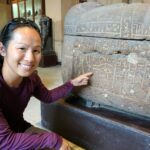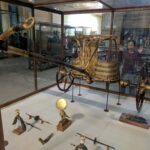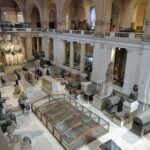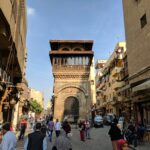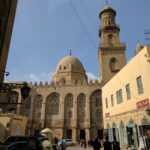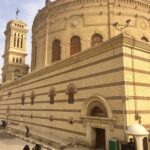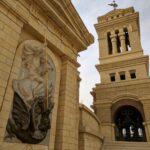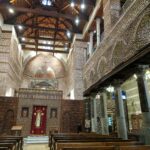Cairo is one of those cities that you can love…if you have the luxury to avoid living in it. My native Egyptian friend left Cairo and Egypt altogether and can rant about his pure loathing for the city. At first I thought it was only his pessimistic nature, but I quickly learned from other locals that Egyptians generally hold great disdain for Cairo; they only live there to work. The city is exhilarating and fascinating as much as it is dilapidated, filthy, and inefficient, and if you have a tolerance for such chaos plus a few days to spare then a visit to Cairo is worthwhile, eye-opening, and even enjoyable.
Naturally, as first-timers to Cairo, we followed the tourist route with visits to the notorious Egyptian Museum off of Tahrir Square, Islamic Cairo with the famous Khan el-Khalili souq and the old gate of Bab Zuweila, and the churches and monuments of Coptic Cairo. (We planned to visit the Salah El Din Citadel, only to discover of its closure every Friday. Whoops!) Although all these sites deserve a visit, our most memorable and enjoyable activities in Cairo were simply exploring. Had we not wandered without a plan or itinerary, we never would have experienced pure Egyptian friendliness and hospitality nor tasted the most amazing falafel we’ve ever consumed. As the largest city in Africa and the Middle East with a population of roughly 12 million people, there is no limit to the number of twisting alleyways that beg for exploration. In addition to visiting the main attractions, wandering the streets is a must and possibly our highlight in Cairo.
Staying downtown is a no brainer for first timers to Cairo–the plethora of $13/night hotels, cheap and tasty eats, and vicinity to all tourist sites and shopping cannot be surpassed. Upon checking into our budget hotel, we immediately made our way to the pink-colored Egyptian Museum.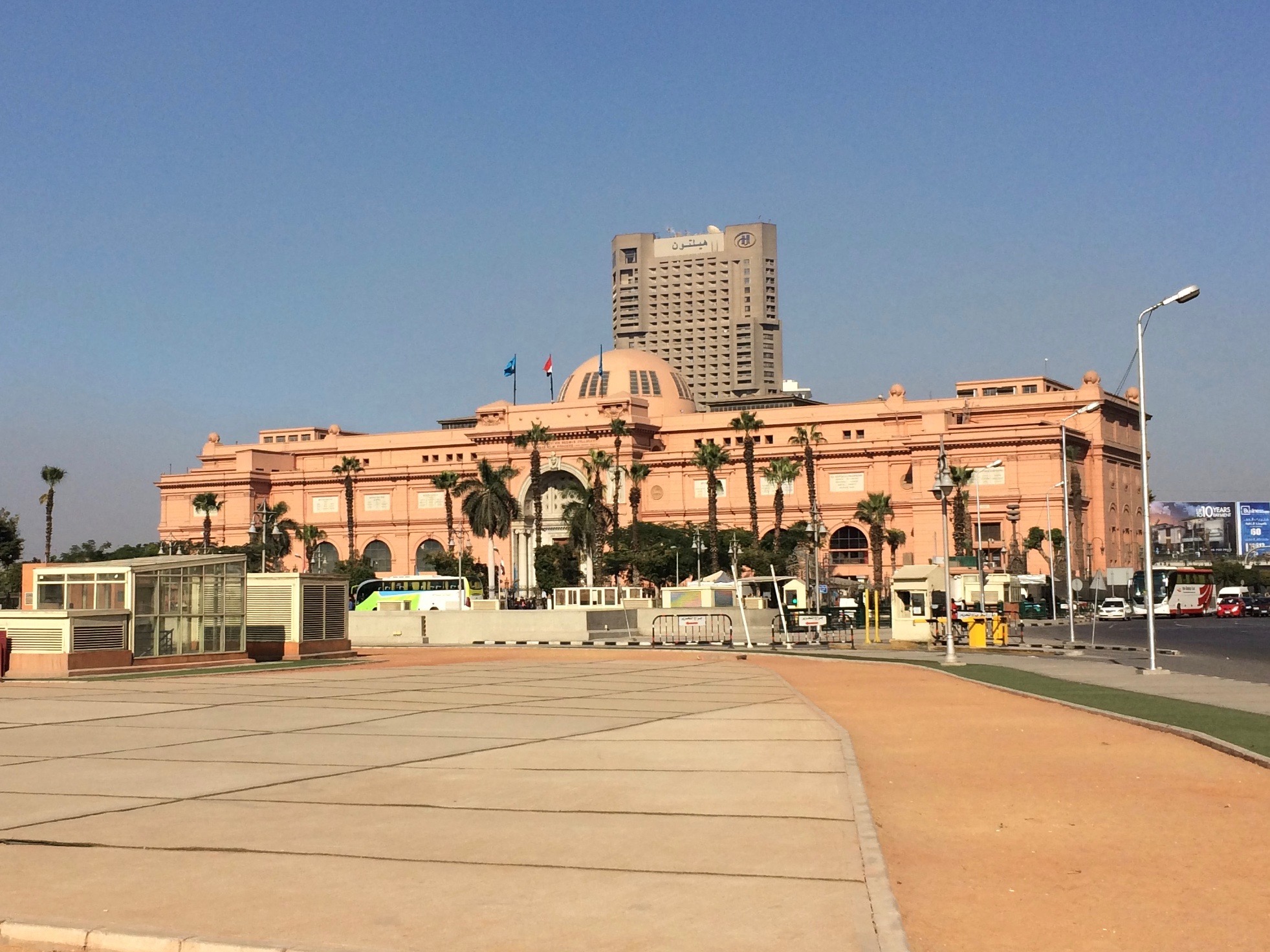
While this poorly curated museum would better serve as a warehouse of ancient treasures, a good half-day should be reserved for the museum. Thousands of artifacts (sarcophagi, mummies, scrolls, jewelry, weapons, facades, sculptures, paintings, chariots, and more!) are on display, and even more remain drearily unsorted, hidden in dark corners, and await to make a public appearance.
Tahrir Square at night: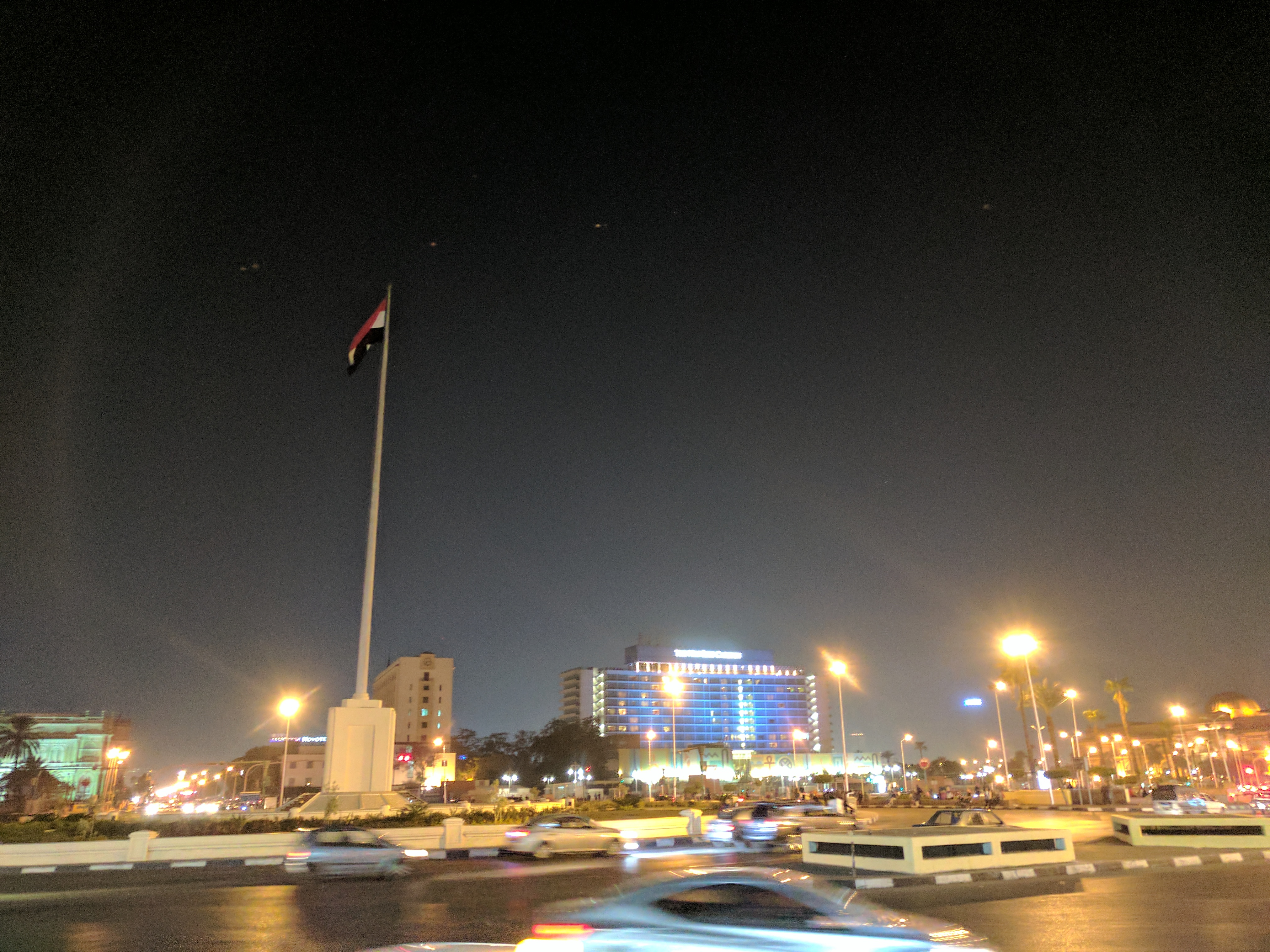
Downtown Cairo to Islamic Cairo is not a far walk, but with the obscene traffic, “creative” parking jobs, and crumbled sidewalks, it probably took us about 40 minutes to walk to Islamic Cairo. Taxis most likely wouldn’t have saved us any time due to the traffic, but more importantly, a taxi would have prevented us from experiencing an authentic Cairo.
First, a walk down the street to Bab Zuweila, one of three remaining gates of Old Cairo. 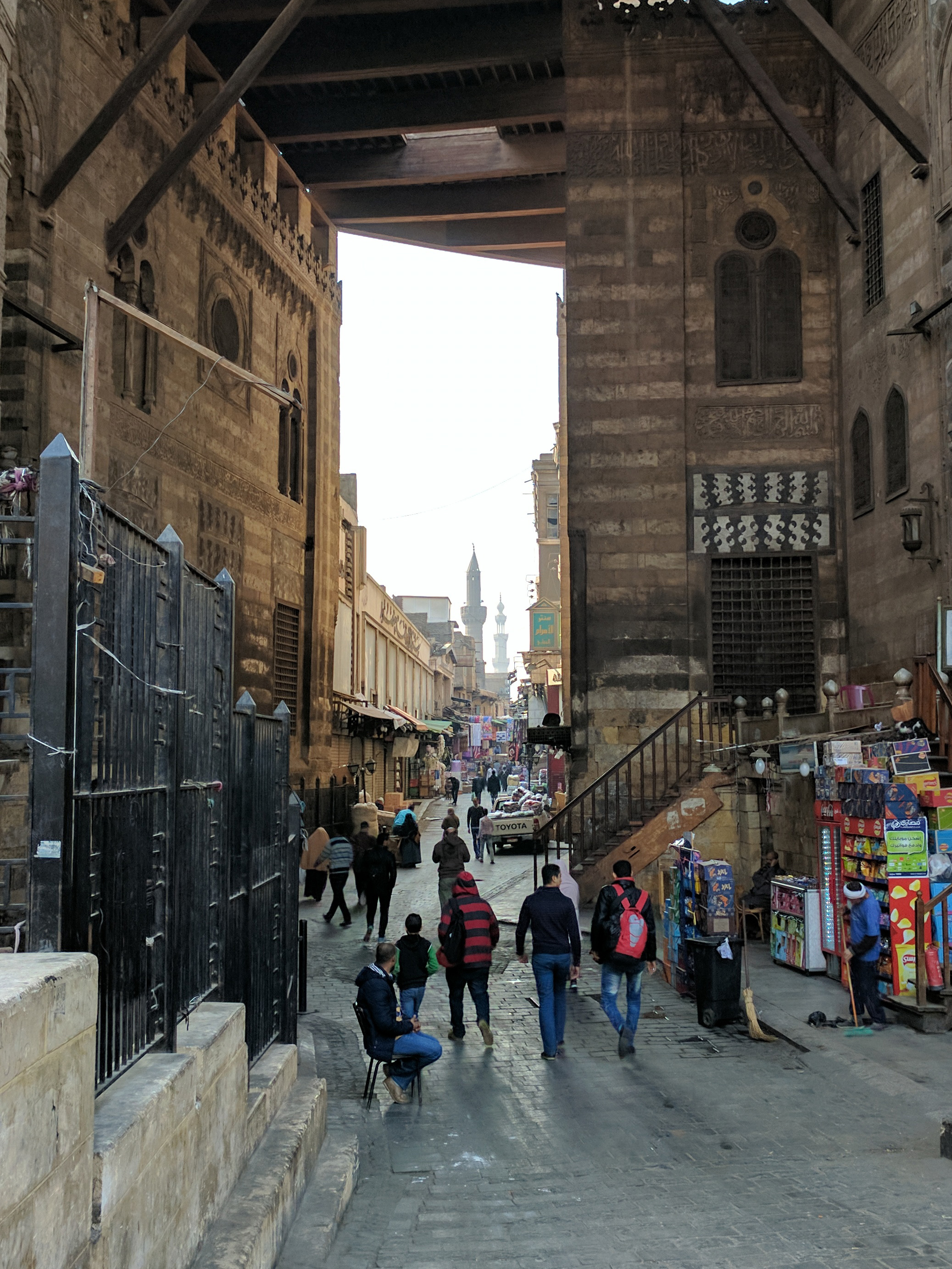
Climbing up the minarets for panoramic views of Cairo is a must.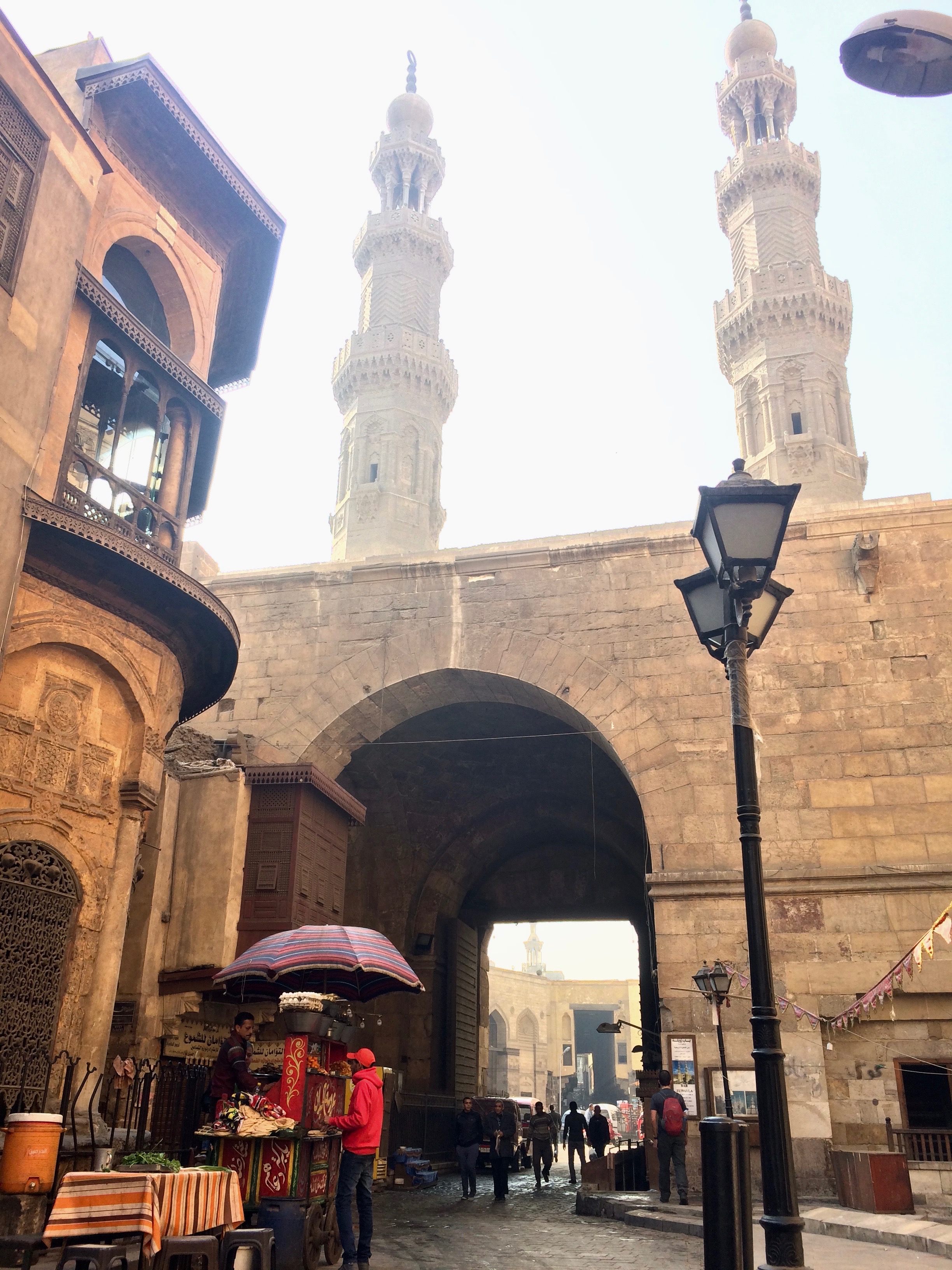
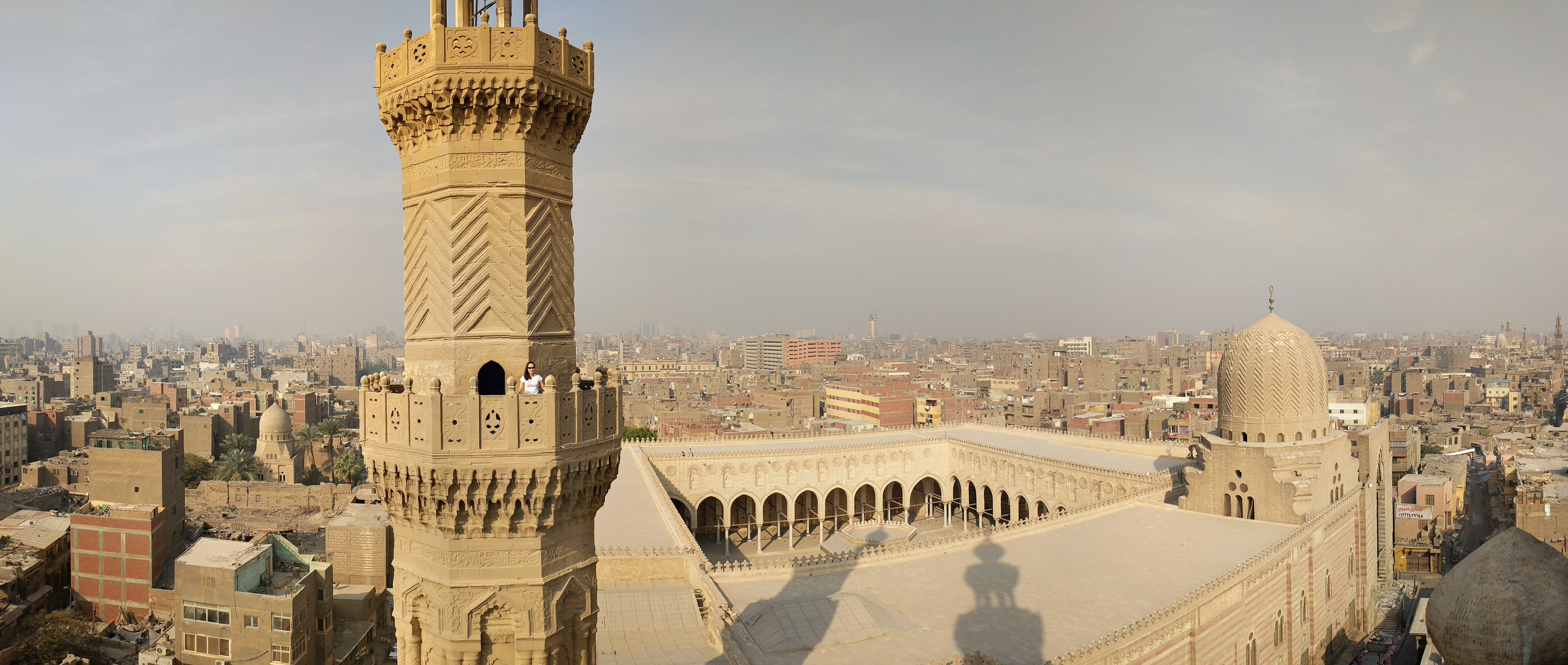
The souq of Khan el-Khalili was no more fascinating than the souqs of Fes or Marrakech. As travelers who never purchase junk souvenirs, we didn’t spend too much time wandering the souq’s aggressive tout-filled alleyways.
Fortunately the neighborhood offered more than just souqs. The Islamic architecture and mosques were photographic as well.
As we wandered back to our hotel in downtown, we kept an eye out for lunch. What did the locals eat? Where did the crowds gather for food? Soon enough we noticed the most popular dish: round serving trays topped with small plates of vegetables, mashed beans, and local pita bread. One after the other, we observed tray deliveries to local shops and random people sitting on the sidewalks. Who were these tray delivery guys, and where did they come from?
Finally, we caught the attention of one food deliverer on a busy road, and we pointed at the tray. He immediately understood our request and motioned us to follow him. We darted through a narrow maze of residential alleys and found that the food deliverer was serving food from a neighborhood food cart! We received plenty of stares, smiles, and welcomes, and the cook happily served us the local bean dish of ful medames for 5 LE (25¢) each. This ended up being one of our fonder memories from Cairo.
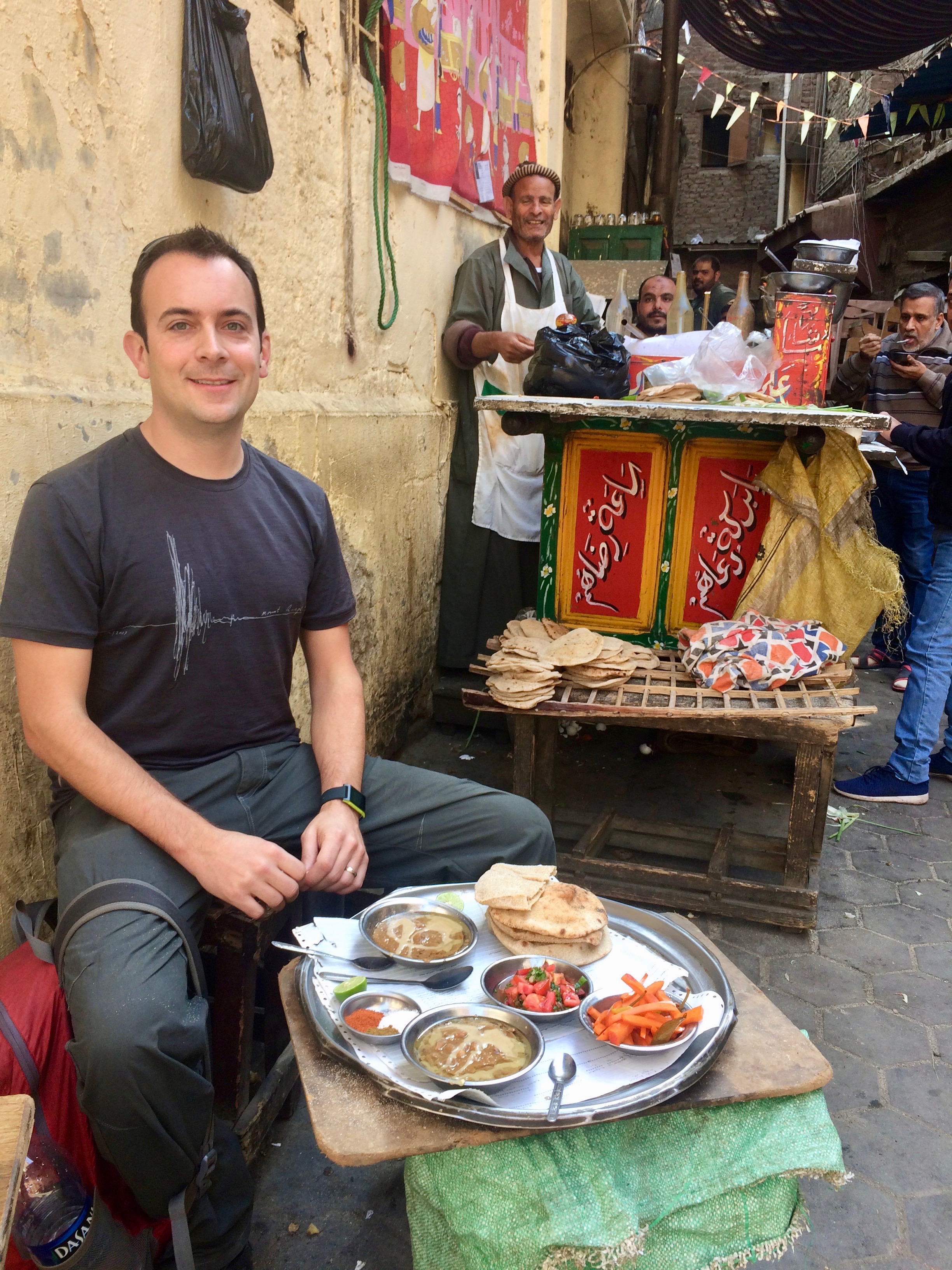
Coptic Cairo, which consists of a handful of ancient and modern Christian churches within a walled fortress, ended up being more interesting than I anticipated. Although the Coptic Museum receives much praise, we skipped the museum and chose to simply spectate the notable structures of the area: the oldest church, mosque, and synagogue in Cairo. We even took the metro there from downtown to avoid the horrendous traffic.
Upon exiting the Coptic Cairo fortification, we ended up wandering the labyrinth of streets filled with the awakening of a typical, busy weekend market. Colorful displays of fruit and vegetables, outstretched hands, shouts of haggling, irritated donkeys and goats, and endless energy filled the scene. Oh, and plenty of cats and dogs too.
As the market crowds thinned out, the stench of donkey and horse feces slowly developed into the wonderful aromas of Egyptian street food: shwarma and my favorite, falafel.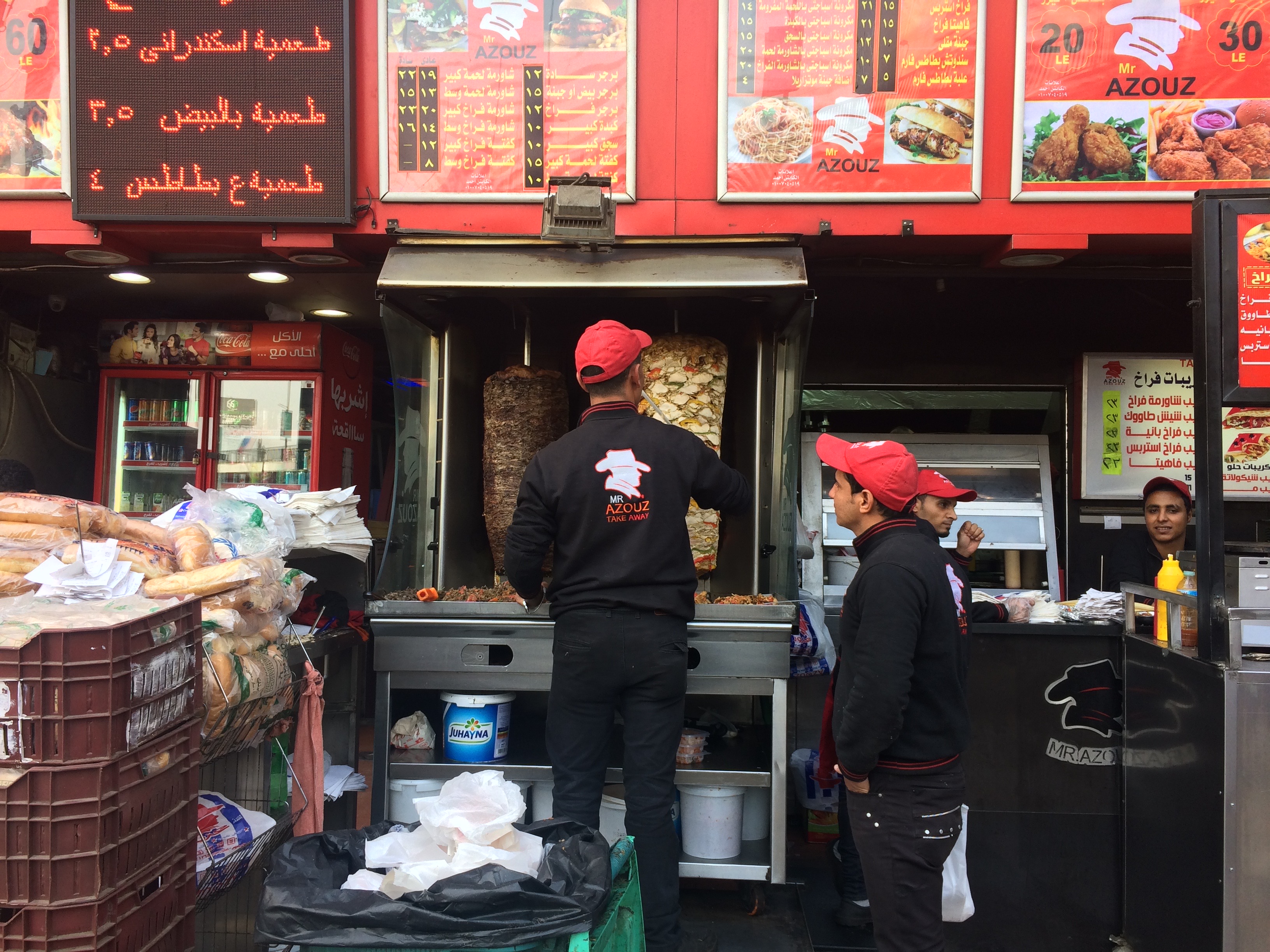
One particular sidewalk crowd caught our eye. We didn’t know what people were lining up for, but we figured it would be worth joining the crowd.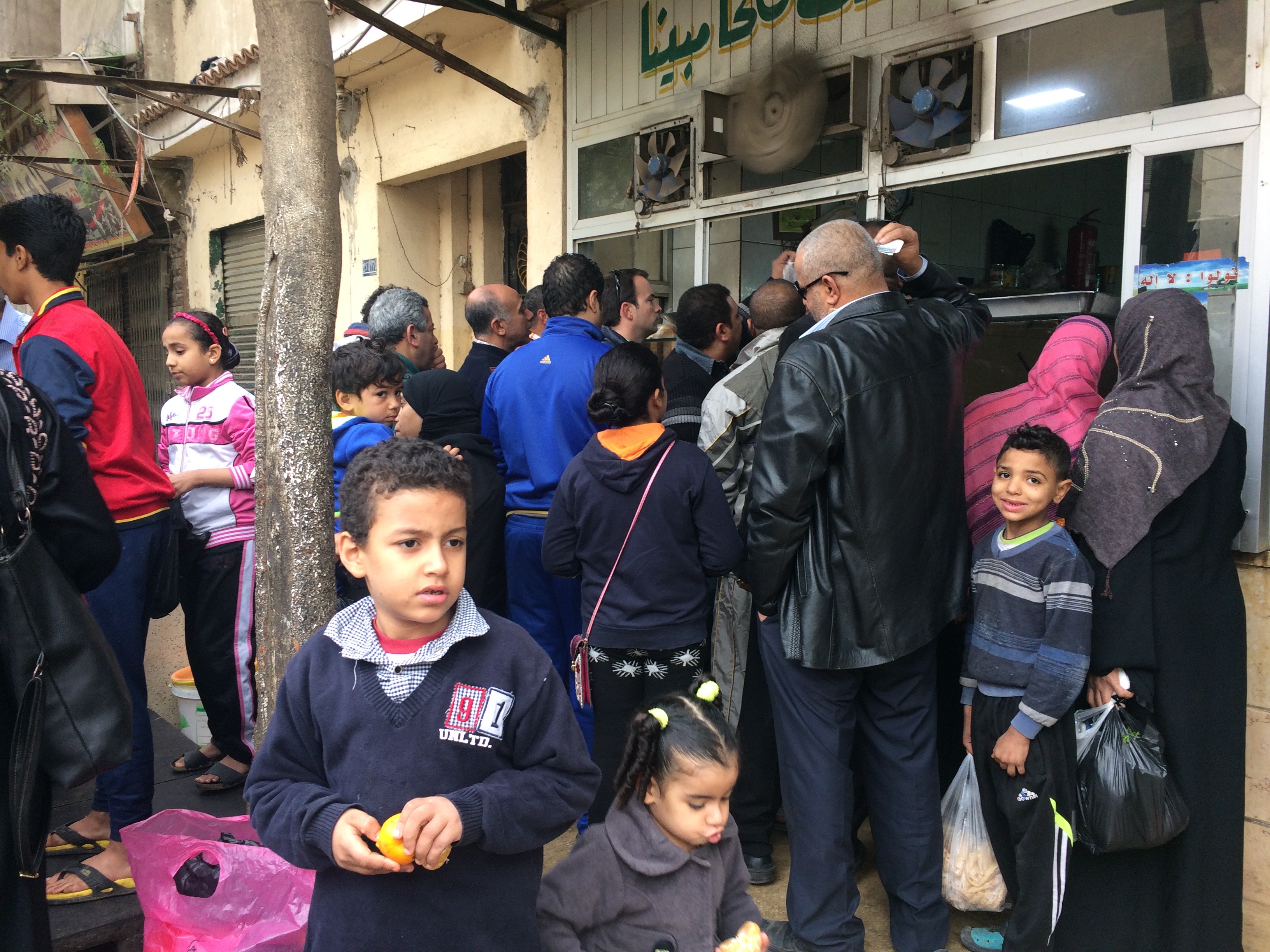
Turned out it was the most popular falafel shop in the neighborhood.
A giant paper cone of freshly fried falafel cost us 5 LE (25¢)! Wow. 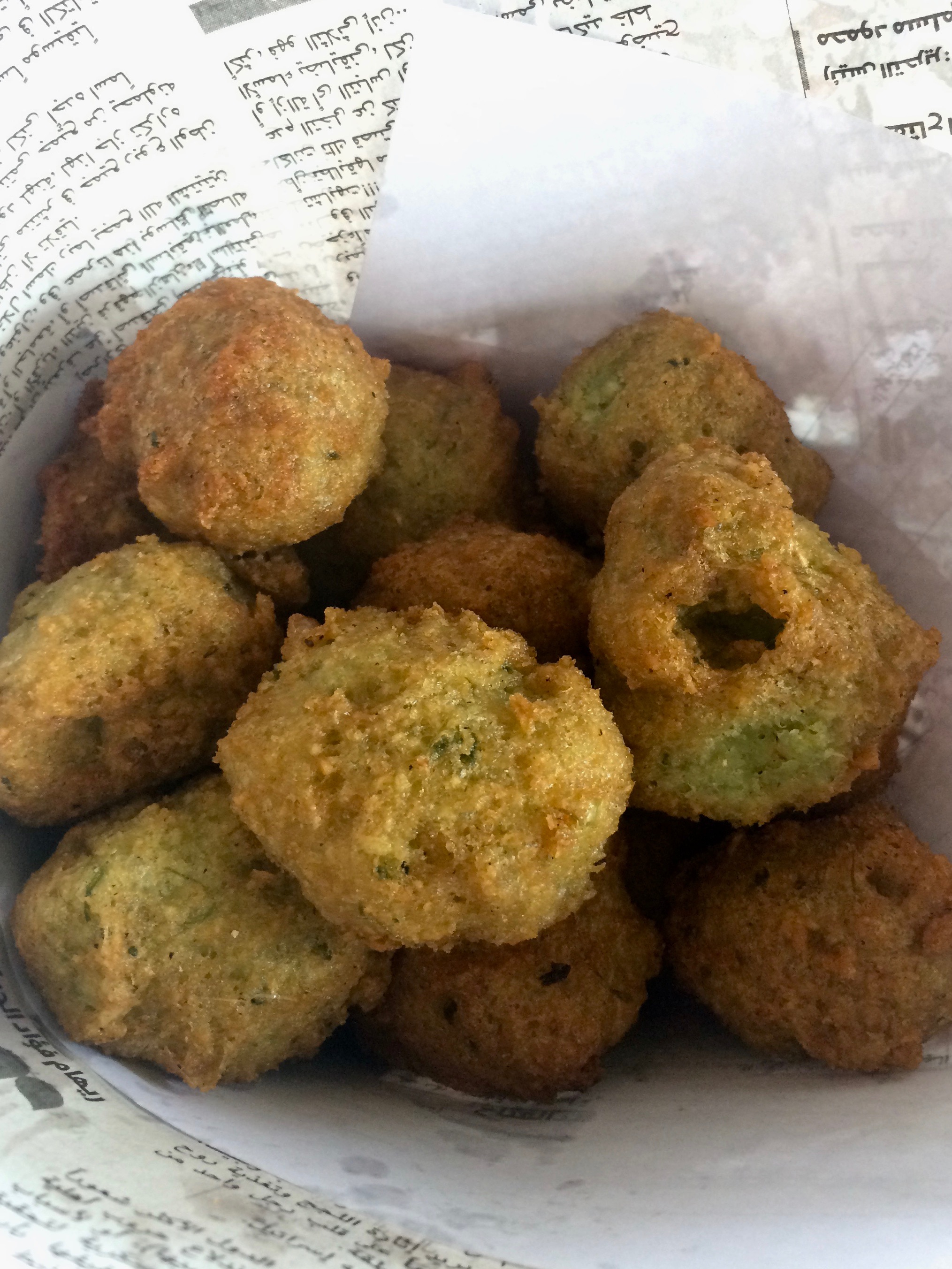
To top off the wonderful balls of fried yumminess, we also devoured a cup of cocktel, my favorite dessert/snack/breakfast in Egypt, which is essentially a fruit cocktail. These could be found all over the streets of Egypt for 5-10 LE. 
Cairo requires patience and energy not for the faint of heart, but once you learn to appreciate the noise along with the culture clash, you can appreciate the insanity of the world’s largest Arab city. It is easy to be overwhelmed with Cairo at first, but during my stays in other Egyptian cities and towns, I found myself surprisingly longing for the “clusterfuck” of Cairo. I’ve always believed that greater rewards are given to those who can endure more headache, and that is especially true when exploring Cairo.

